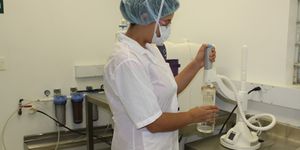Looking to Newborns for Help Healing Scars on the Heart
Scars are a badge of honor to many, but they are really just a consequence of the body’s repair response. The body, doing its best to close wounds quickly, leaves a scar of connective tissue rather than healthy skin. This scarring extends within the body as well.
Damage to the heart is, obviously, very harmful. Cardiac events, such as heart attacks, leave behind a sort of scar. Insead of a fresh scar with a story behind it, this scar can prevent the heart from pumping efficiently and lead to future heart attacks or other cardiac events.
One way scientists hope to tackle this scarring issue is by studying newborns. An adult and a newborn differ in more ways than just size. As we get older, many processes in the body (like the repair process) change. Newborns tend to have a repair response that regenerates the damaged tissue, rather than repair it with scar tissue, and finding out how this works could lead to huge advances in scar prevention both in and out of the body.
A team from the University of Sao Paolo Medical School in Brazil wanted to study how adults and newborns differ. Using rats, they hypothesized that the immune response in newborns changes as they mature. This change would result in an increased incidence of scarring, rather than healing. They did this by examining the activity of M1 (pro-inflammatory) and M2 (anti-inflammatory) macrophages at the site of damage. These macrophages are the first responders to a damaged area and often dictate which secondary responses are activated.
The first observation the team made was that newborns had elevated M2 macrophage activity compared to adult repair responses. This activity produces several signaling molecules called cytokines, which differ depending on the type of macrophage. They pulled out two of these cytokines, IL-4 and IL-6, and studied their ability to induce repair signals in heart cells.
The team cultured heart cells in the lab with media enriched with the chosen cytokines and a general M2 cytokine profile. They found that when the cells underwent stress, the cultures with the cytokines had improved regeneration responses. Not only that, but they also seemed to reduce pathways related to scarring. This observation could explain why newborns have repair responses that emphasize regeneration rather than scarring.
Many other studies show similar findings in mice, with newborn repair pathways being more effective at actual healing rather than scarring. Identifying what mechanisms are responsible for this could result in treatments that assist heart attack patients in healing. This study showed that the immune response is markedly different in newborn rats compared to adults, and results in pro-regenerative repair.
The study concludes, “Altogether, we provided evidence that soluble factors from M2 macrophage-conditioned media display pleiotropic pro-regenerative effects on neonatal target cardiac cells and that the candidate cytokines IL-4 and IL-6 recapitulate, at least in part, components of pro-regenerative response.”
Sources: Nature Scientific Reports, Pastiche Training









